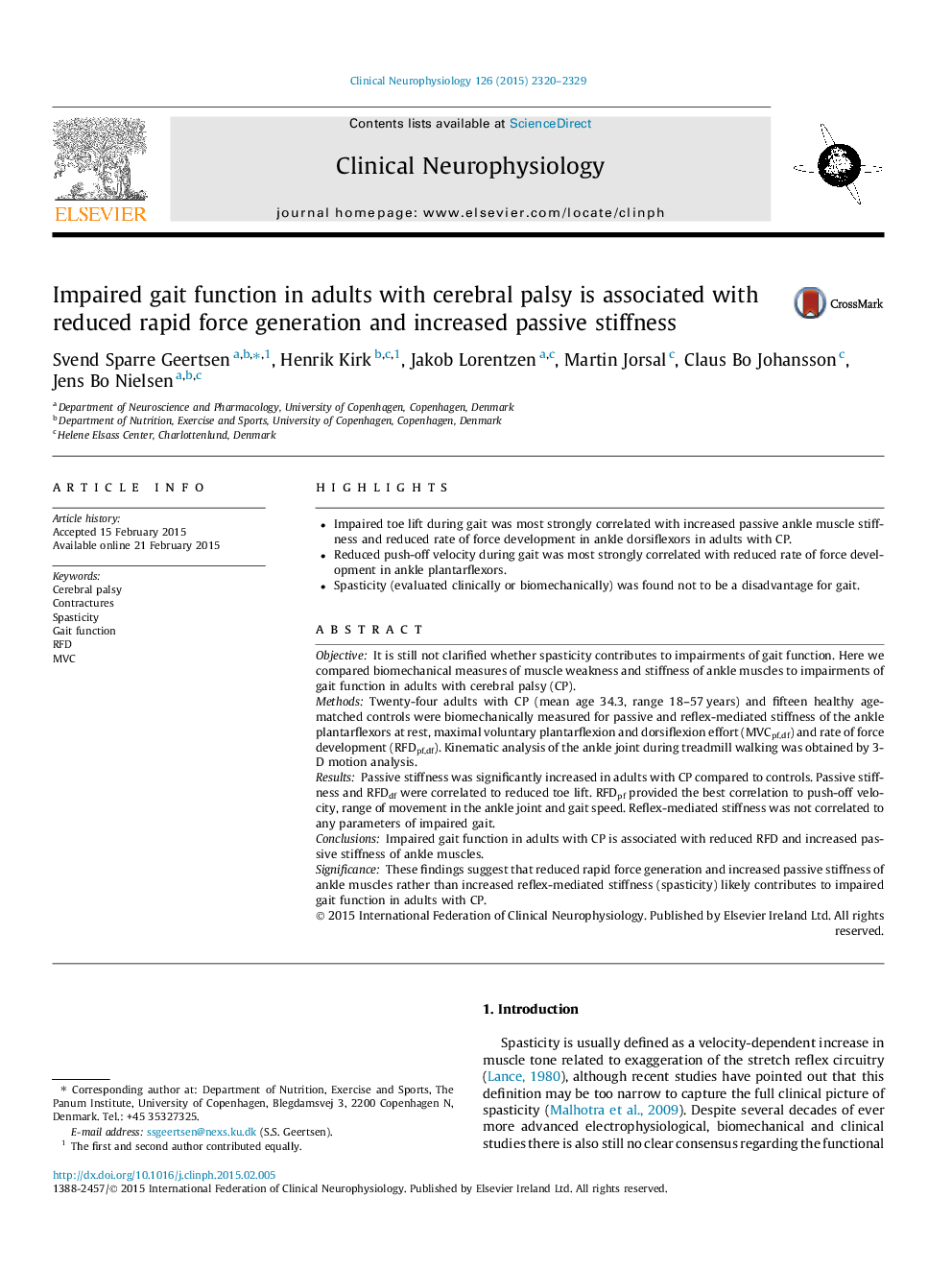| Article ID | Journal | Published Year | Pages | File Type |
|---|---|---|---|---|
| 3043144 | Clinical Neurophysiology | 2015 | 10 Pages |
•Impaired toe lift during gait was most strongly correlated with increased passive ankle muscle stiffness and reduced rate of force development in ankle dorsiflexors in adults with CP.•Reduced push-off velocity during gait was most strongly correlated with reduced rate of force development in ankle plantarflexors.•Spasticity (evaluated clinically or biomechanically) was found not to be a disadvantage for gait.
ObjectiveIt is still not clarified whether spasticity contributes to impairments of gait function. Here we compared biomechanical measures of muscle weakness and stiffness of ankle muscles to impairments of gait function in adults with cerebral palsy (CP).MethodsTwenty-four adults with CP (mean age 34.3, range 18–57 years) and fifteen healthy age-matched controls were biomechanically measured for passive and reflex-mediated stiffness of the ankle plantarflexors at rest, maximal voluntary plantarflexion and dorsiflexion effort (MVCpf,df) and rate of force development (RFDpf,df). Kinematic analysis of the ankle joint during treadmill walking was obtained by 3-D motion analysis.ResultsPassive stiffness was significantly increased in adults with CP compared to controls. Passive stiffness and RFDdf were correlated to reduced toe lift. RFDpf provided the best correlation to push-off velocity, range of movement in the ankle joint and gait speed. Reflex-mediated stiffness was not correlated to any parameters of impaired gait.ConclusionsImpaired gait function in adults with CP is associated with reduced RFD and increased passive stiffness of ankle muscles.SignificanceThese findings suggest that reduced rapid force generation and increased passive stiffness of ankle muscles rather than increased reflex-mediated stiffness (spasticity) likely contributes to impaired gait function in adults with CP.
